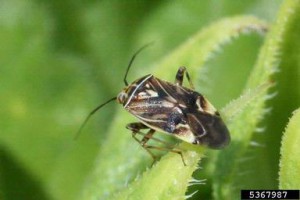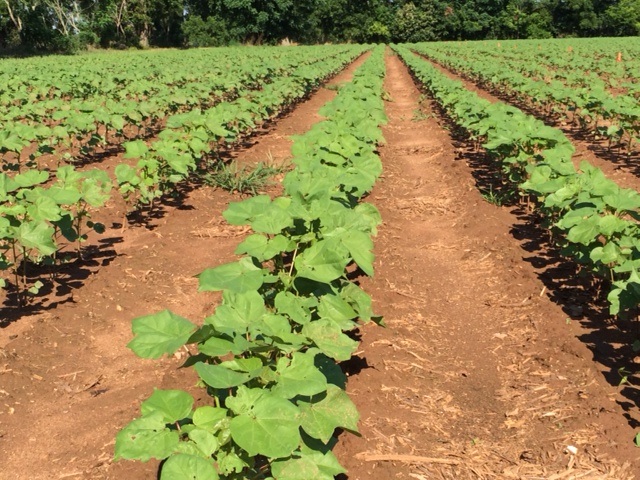Our oldest planted cotton has started squaring and it’s time to start scouting fields for plant bugs. For the past several years the tarnished plant bug has been ranked nationally as the number one cotton insect pest in terms of yield losses. This has been especially true in the Mid-South where reported losses usually exceed 4 percent. In Florida, plant bugs have traditionally been a minor pest in comparison to other insects such as stinkbugs and bollworms. However, in recent years plant bugs have become more of a problem in some, but not all, fields. Therefore, it is important to carefully scout each field before making treatment decisions.
Plants that are fruiting normally should be setting at least 80 percent of the first and second fruiting positions on the upper five fruiting branches. However, there are many factors besides plant bugs that can cause poor square retention. If square retention falls below 80 percent, make sure that numerous plant bugs are present before deciding to treat. A sweep net works well for sampling plant bugs in pre-bloom cotton and a drop cloth works well for sampling older fields in bloom. Threshold numbers vary from state to state but most consider 8 bugs/100 sweeps to be “numerous” in pre-bloom cotton and 1 bug/2 row feet using a drop cloth during bloom.
Keep in mind that research has shown there is no benefit from maintaining excessively high square retention rates. Plots with retention rates of 70 to 85 percent at first bloom often yield slightly higher than plots with higher retention rates. Extension insecticide recommendations for plant bugs can be found in the following references.
Collins, Guy, et.al. “2014 Georgia Cotton Production Guide” pp 28-40.
- 2017 UF/IFAS Cotton Variety Trial Results - March 23, 2018
- Burlin and Levi Findley Families Honored as 2017 Santa Rosa County Farm Families of the Year - January 12, 2018
- Snails have Invaded the Western Panhandle - July 14, 2017


